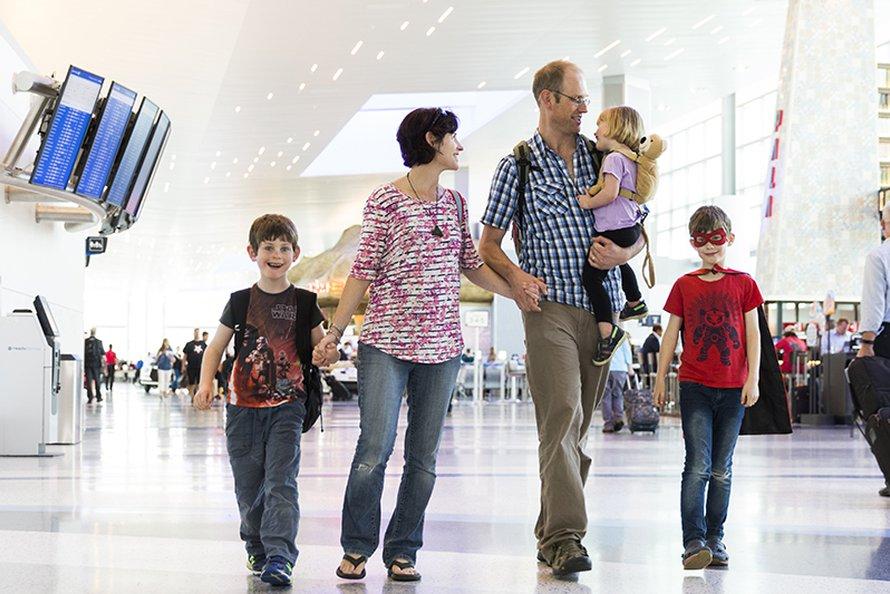Houston Airports closed out yet another record-breaking year with more than 59.7 million passengers arriving, connecting or departing George Bush Intercontinental (Bush) and William P. Hobby (Hobby) airports in 2019.
“With a strong local economy and confident consumers, we are seeing more people traveling for both business and leisure,” Houston Airports Director Mario Diaz said. “At this rate, we will surpass 60 million passengers in 2020 and are already making plans for the continued growth we are experiencing.”
BUSH AIRPORT
Nearly 45.3 million passengers passed through Bush Airport in 2019, a 3.3% increase in traffic from 2018. The growth was primarily driven by domestic travelers, which increased by 1.07 million people. The airport also saw nearly 380,000 more international passengers in 2019. The air traffic connectivity provided by Houston Airports continue to be a fundamental catalyst for Houston’s economy. Bush Airport stood out for contributing $27.3 billion to the local economy, securing 141,500 jobs and offering more flights to more Mexican destinations than any other airport in the United States. With 118 domestic and 69 international destinations, ACI-NA ranks IAH as the 16th busiest airport in the nation (2018).
HOBBY AIRPORT
That positive trend was also reflected at Hobby Airport, where 13.6 million passengers flew domestically, a 1.2% increase from 2018. However, the total passenger traffic decreased by 21,000 passengers to 14.46 million in 2019, primarily due to the international passenger reduction that resulted from Southwest Airlines removal of its Mexico City route in March 2019 and Jet Blue relocating to Bush Airport. Hobby Airport, with five-gate international concourses as well as 59 domestic and 12 international destinations, contributed $5.8 billion to the economy and secured 36,700 jobs. It ranks as the 39th busiest airport in the nation (ACI-NA rankings, 2018).
ELLINGTON AIRPORT / HOUSTON SPACEPORT
Ellington Airport/Houston Spaceport completed 75,397 flight operations in 2019, its busiest year to date. Key infrastructure upgrades were delivered, such as the new state-of-the-art air traffic control tower that supports general aviation and will be crucial for future operations at the Houston Spaceport. The sprawling facility welcomed new world-class aerospace tenants into its 600 acres of prime land available for lease and real estate development. Construction of streets, water, wastewater, electrical power and distribution and communications facilities continues in the ongoing Phase 1 expansion of the Houston Spaceport.
Houston Airports stayed focused on its mission— connecting people, businesses, cultures and economies of the world to Houston. In that spirit, both Bush and Hobby airports were ranked in the Top 10 airports for their size groups in the J.D. Power 2019 North America Airport Satisfaction Study. Houston continues to be the only city in the Western Hemisphere with two 4-star airports (according to Skytrax, an international air transport rating organization). The rating is determined through direct and professional analysis of industry quality standards. The airport star ratings are recognized as a global benchmark of airport standards.
